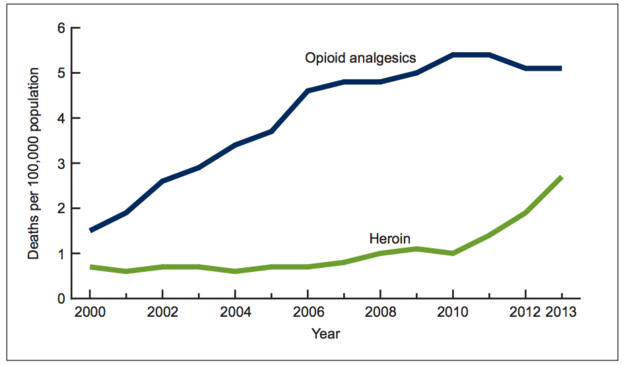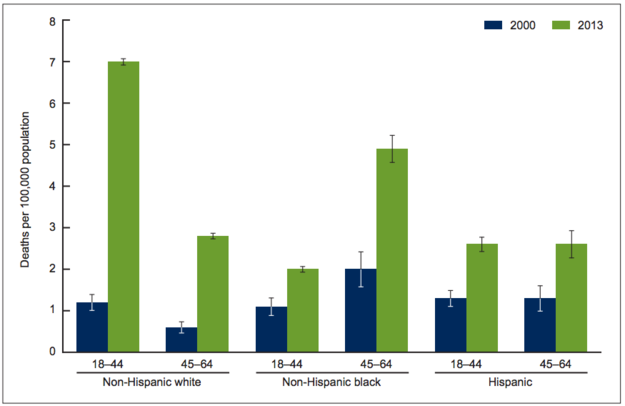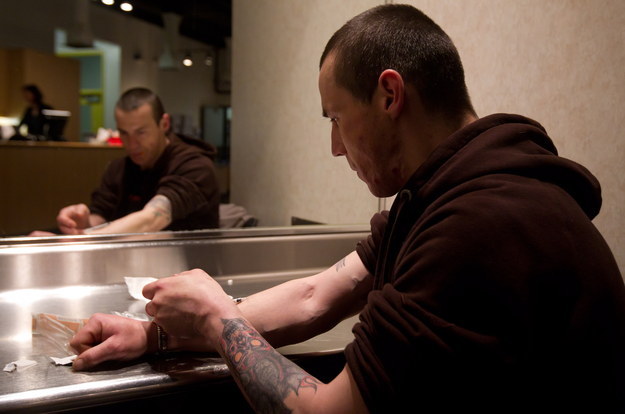As doctors crack down on the misuse of prescription painkillers, more people are turning to heroin — and dying because of it
Darryl Dyck / AP Photo
The number of people dying from heroin overdoses in the United States nearly tripled from 2010 to 2013, according to a study published Wednesday by the National Center for Health Statistics (NCHS). In contrast, the number of deaths from painkillers over the same period leveled out, the study found.
“The fact that it tripled is clearly a big change,” Holly Hedegaard, an injury epidemiologist at the NCHS and lead author of the study, told BuzzFeed News. “Most things don’t triple in only three years — that is obviously a big concern.”
Though the rate of heroin deaths has risen sharply, the raw number of deaths due to heroin is still less than that of opioid analgesics, drugs commonly prescribed to treat chronic pain. In 2013, 8,257 people died as a result of heroin overdoses and 16,235 died from painkillers.

National Center for Health Statistics
Between 2002 and 2011, an estimated 25 million people started using painkillers recreationally.
By 2010, roughly 12 million of these users had no prescription for the drug, but somehow obtained it illegally, according to the National Institute on Drug Abuse.
Others got prescriptions from so-called “pill mills,” clinics where corrupt doctors hand out prescriptions with little discretion. The biggest culprit was OxyContin, or oxycodone hydrochloride, a drug that is highly addictive.
In Florida — home to 93 of the top 100 oxycodone-dispensing doctors in the country — doctors doled out more than 650 million pills in 2010.
The numbers began to shift in 2010, when OxyContin’s manufacturer, Purdue Pharma, reformulated the drug to make the pills more difficult to crush and snort. The Food and Drug Administration reclassified the drug as “Schedule 2,” making it harder to prescribe, and law enforcement got more serious about shutting down pill mills.
But these changes came with an unintended side effect: a rise in heroin use as drug users searched elsewhere for opiates.
“It’s a whack-a-mole sort of thing,” Andrew Gurman, speaker in the House of Delegates for the American Medical Association, told BuzzFeed News. “In response to this tightening supply, people have started to look to heroin for a cheaper and more available alternative.”

Heroin use by age and ethnicity National Center for Health Statistics
In 2003, there were about 314,000 heroin users in the United States. A decade later there were 681,000.
While an 80-milligram OxyContin pill can cost between $60 and $100 on the street, heroin runs for about $9 a dose, according to the Office of Drug Control Policy in Kentucky, which has seen a sharp rise in heroin use.
The drop in pill availability has meant that the demographics of heroin users have shifted as well.
In 2000, black people between the ages of 45 and 64 had the highest rate of deaths as a result of heroin overdose. By 2013, the group dying most was white men aged 18 to 44.
“Back in the 1960s and 1970s, typically heroin was the first opioid these drug users ever used,” Hedegaard said. “Whereas more recently, people using heroin have more likely started using opioid analgesics first.”
Even so, heroin is an equal-opportunity drug.
“What people need to realize is that this is a phenomenon that cuts across all socioeconomic demographics,” Gurman said. “Right-wing Republicans, tea party people, left-wing people are dying from heroin — white, black, Latino, everything.”
Addressing the current surge in heroin use will be far from straightforward, Gurman said. It will take a multifaceted public health approach that continues to target patients and physicians, offers sufficient resources for treatment and counseling, and raises awareness about safe ways to store medications.
“A lot of people might have drugs being stolen from unlocked medicine cabinets and not even know about it,” Gurman said.
Law enforcement will also be involved, but that shouldn’t be where most of our energy is focused, Gurman said. “We can’t just arrest our way out of this problem.”


















